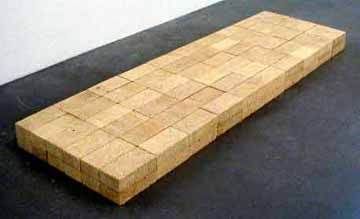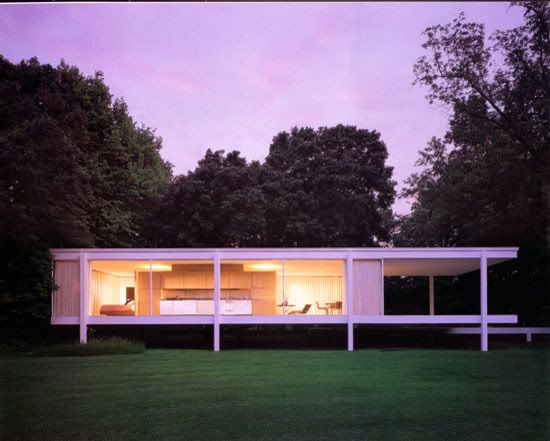(no subject)

Carl Andre, Equivalent VIII, 1966.
Often called the ‘neo-moderns’, minimalism evolved out of the notion that all existing values must be re-valued. There was a nihilistic and absolute attitude - form became removed from content; materials were used through exploration; and most importantly, there was never an underlying meaning to the artists work. For many minimalist designers it was imperative that the original notions of functionality were destroyed, or deconstructed, so that the barest elements remained, and a new meaning was able to be applied to the object.
The ‘Farnsworth House’, by Mies van der Rohe is one such example - by completely opening the house to the outside through the use of glass walls, he radically altered the way that house would be used. Due to the openness of the house, the traditional conceptions of privacy within the household unit were completely removed, forcing the occupant to exist within the space in a new manner.
“Every physical element has been distilled to its irreducible essence.” Farnsworth House History.

Mies van der Rohe, Farnsworth House, 1945-51.
I feel like my life lacks a philosophy to bind it.